INTRODUCTION

AIO (all in one) liquid CPU coolers may have risen in popularity over the last couple of years due to their superior cooling efficiency and zero clearance issues with mainboard components compared to most CPU air coolers but just like SSDs (solid state drives) and HDDs (hard disk drives) it will probably be a long time before the latter get replaced completely (and if that ever happens). On top of that there are some CPU air coolers currently in the market which thanks to their massive size can actually take head on even some of the top AIO liquid CPU models out there. Thanks to the massive dual-tower (sandwich type) NH-D15 and NH-D15S CPU air coolers Noctua has enjoyed the top spot for a long time now but it seems that be quiet! wants to change that with their latest Dark Rock 4 and Dark Rock Pro 4 models released officially just yesterday.
be quiet! is a premium brand of power supplies, PC cases and cooling solutions for desktop PCs. Consistently the leader in the German PC power supply market since 2007*, be quiet! is one of the most successful PSU brands in Europe. This enduring success is largely thanks to the typical German passion for quality and precision. All product conception, design and quality control is performed in Germany. German expertise is evident the moment an idea is born and throughout the entire design and production process. be quiet! never releases a product until it meets the highest expectations. All materials used – from the smallest screws to the metals in the cases – are tested to rigorous standards. That is why be quiet! power supplies, PC cases, CPU coolers and case fans are among the most silent, powerful and reliable on the market. Innovative engineering concepts coupled with an uncompromising choice of premium materials and world-class manufacturing quality make be quiet! second to none when it comes to noise reduction. With over ten years of experience, be quiet! are truly the quietness experts.
The Dark Rock 4 and Dark Rock Pro 4 CPU air coolers by be quiet! are the 4th in line to carry that specific name right after the highly successful Dark Rock 3 and Dark Rock Pro 3 models released back in 2014. As a matter of fact both the 3 and 4 models are very similar (both in terms of design and size) so if we had to guess it would seem that be quiet! took the former line back to the drawing board further tweaked it and released it again. Strangely enough although the Dark Rock 4 shares almost the exact same measurements as its predecessor (159x136x96mm vs 160x137x97mm) and is actually lighter (920g vs 976g) it features a higher TDP (thermal design power) of 200W (as opposed to 190W of its predecessor). The same applies for the Dark Rock Pro 4 but this time over although it's also roughly as large (163x136x146mm vs 163x137x150mm) and as heavy (1130g vs 1197g) as it predecessor they both feature a TDP of 250W. The similarities however don't end there since both the Dark Rock 3 and 4 feature the same number of fins (51) and heatpipes (six 6mm ones) and of course the same is true for the Dark Rock Pro 3 and 4 models (90 fins - 45 on each of the two heatsinks - and seven 6mm heatpipes). The same wave contour fin design was also used in the new Dark Rock 4 and Dark Rock Pro 4 models (just like with their predecessors) along with similar brushed aluminum diamond cut top covers (we like the new ones better). The same 120mm PWM SilentWings fan was also used both in the Dark Rock 3 and 4 models (1400RPM/67.8 CFM/20.8dBA). So what did be quiet! change in the new Dark Rock 4 and Dark Rock Pro 4 models? Well for one they used a nice looking black coating which according to them thanks to its ceramic particles helps with heat transfer (even if it doesn't however it still looks great). We were also surprised to see that be quiet! used different SilentWings fans for the Dark Rock Pro 4 and to be more specific although the Dark Rock Pro 3 came with a 120mm (1700RPM/57.2CFM/21.5dBA) and a 135mm one (1400RPM/67.8 CFM/20.8dBA - same as the Dark Rock 3/4) the Dark Rock Pro 4 comes with two slower 120mm (1500RPM/50.5CFM/18.9dBA) and 135mm (1200RPM - no other data is available at this time but we expect a CFM placed at just over 60 with just below 19dBA of noise).
SPECIFICATIONS AND FEATURES
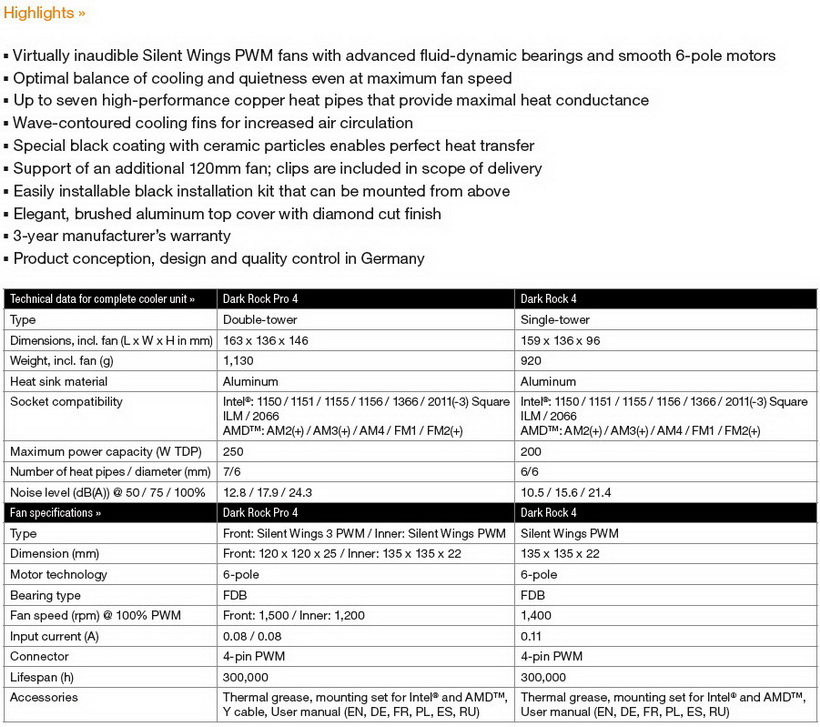
PACKAGING AND CONTENTS
Both coolers arrived inside the typical box with the large product picture at the front be quiet! has been using for years now.
A few words about be quiet! are placed on the left side of the box in 6 languages (the TDP is also printed here).
4 pictures showcasing the main product features are placed on the right side.
The specifications tables are placed at the rear of both boxes.
Although the fan of the Dark Rock 4 is placed separately than the heatsink (the heatsink is placed inside two pieces of foam) the fans of the Dark Rock Pro 4 are both mounted onto the heatsink.

 Be quiet! ships both units with an extra 135mm fan, 4 fan clips, large Philips screwdriver (be quiet! follows after Thermalright and Noctua in this), small tube with thermal grease, backplate, user manual (in 6 languages) and mounting sets for both Intel LGA1150/1151/1155/1156/1366/2011/2011-3/2066 and AMD AM2/AM2+/AM3/AM3+/AM4/FM1/FM2/FM2+ mainboards (the Dark Rock Pro 4 also comes with a fan y-splitter cable in the bundle).
Be quiet! ships both units with an extra 135mm fan, 4 fan clips, large Philips screwdriver (be quiet! follows after Thermalright and Noctua in this), small tube with thermal grease, backplate, user manual (in 6 languages) and mounting sets for both Intel LGA1150/1151/1155/1156/1366/2011/2011-3/2066 and AMD AM2/AM2+/AM3/AM3+/AM4/FM1/FM2/FM2+ mainboards (the Dark Rock Pro 4 also comes with a fan y-splitter cable in the bundle).
THE DARK ROCK 4 & DARK ROCK PRO 4
Both coolers look great not only thanks to the redesigned brushed aluminum top covers but also thanks to the black ceramic coating.

 As mentioned earlier the Dark Rock 4 heatsink features a total of 51 aluminum fins while the Dark Rock Pro 4 features a total of 90 aluminum fins (45 on each heatsink).
As mentioned earlier the Dark Rock 4 heatsink features a total of 51 aluminum fins while the Dark Rock Pro 4 features a total of 90 aluminum fins (45 on each heatsink).
The wave contour fin design is featured only at the rear of both coolers (this design increases air circulation and contributes to high convection efficiency).
The redesigned brushed aluminum diamond cut top covers look great no matter how many times we check them out (they also help keep air from leaking upwards).
Be quiet! has equipped both coolers with long rubber pads to ensure zero vibration coming from the fans.
The Dark Rock 4 features six 6mm black coated copper heatpipes whereas the Dark Rock Pro 4 features a total of seven.
Both coolers feature polished bases without any kind of visible machine marks as seen above.



Again as mentioned earlier the Dark Rock Pro 4 cooler comes with a 120mm fan (placed at the front for zero clearance issues with memory modules) and a 135mm fan (middle) whereas the Dark Rock 4 comes with a single 135mm fan.
It may not be very easy to see in the above picture but the black ceramic coating is very easy to remove even while mounting/unmounting one of the fans so do keep that in mind.
TEST BED
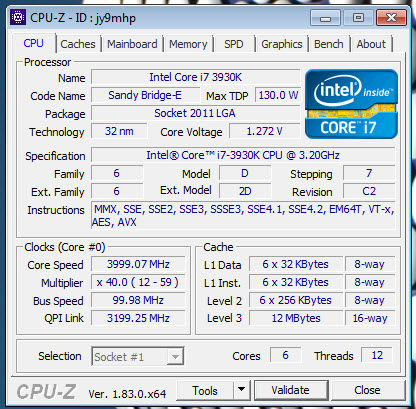

TESTING METHODOLOGY
We always take things quite seriously when it comes to work so just like with the previous LGA1366 database we will not be testing each CPU Cooler on its own and with different ambient temperature levels and thus we can actually have yet another valid CPU Cooler database. Testing a CPU Cooler automatically means that you need to know where it stands against the immediate competition and to accomplish that we have spent both money and time through the years, something that we plan to continue to do so in order to get the most accurate results for the end consumers who read these lines. Every CPU cooler in this database is tested with the bundled 140mm/120mm/92mm/80mm fans while working at both idle speed and 100% of their speeds for all the temperature tests. CPU Coolers that do not come bundled with a fan/s are measured using a Noctua fan (size dependent on the model) to test for the temperature tests but due to the lack of a stock fan dBA level tests are obviously skipped. Single (120/140mm) watercooling solutions are tested with the radiator mounted at the rear of our test rig while dual/triple/quad (240/260/280/360/420/480/560mm) solutions with the radiator mounted at the top. For the dBA tests every cooler in the database was measured both while on idle mode or with the fan controller in the minimum setting and while on extreme load or with the fan controller all the way to the highest possible setting (PWM fans do that on their own without our intervention). Every single test takes place in a temperature controlled room of 23 degrees Celsius Ambient Temp with the help of two AC units placed diagonally inside the room. The Arctic Silver 5 thermal paste is used with every CPU Cooler in our latest LGA2011 database (although initially this was not the plan we had to change things to get the most accurate results). Finally it's very important to point out that just because a CPU Cooler is better than another when tested with our test rig that does not necessarily mean that the same performance differences will apply 100% for other CPU models and in other situations (such as different ambient temps and system configurations).
To successfully record the load temperatures we use the latest OCCT application for around 6-10 minutes to push the processor to its limits and after that is done and the temperatures are recorded we wait for about 10-20 minutes for the CPU to cool down and record the idle temperatures. This is done to allow time for the thermal conductive material to achieve the optimal performance level. Same procedure is then repeated with the Passmark BurnIn Test as a failsafe just in case the OCCT results are wrong. This procedure is more time consuming than the usual peltier/thermometer tests but this way not only can we deliver real world results to our readers based on real CPUs but we can also triple check the results using a variety of programs. Last but not least the temperatures were recorded using both the latest versions of AIDA64 and RealTemp while the noise level tests are performed using a high precision ExTech HD600 Decibel Meter placed about 10-15cm above the CPU Cooler. Still although the same testing procedure applies to all units do take into consideration that unlike the official numbers which are measured in special noise isolated labs with just the fans here we also have both the rest of the cooler and the rest of the system (although all system fans are turned off when recording noise levels).
TEST RESULTS


CONCLUSION
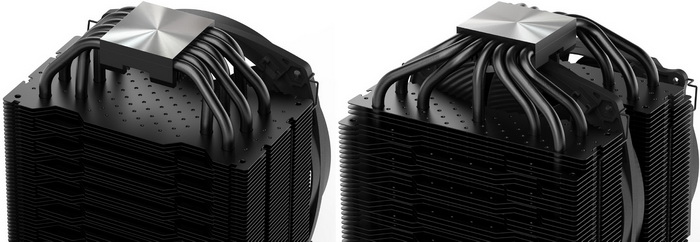
Both the Dark Rock 4 and Dark Rock Pro 4 continue the very successful path paved by their predecessors and although that was expected right from the get go the performance gap is slightly larger than what we were expecting. You see based on their specifications sheets there was a big chance both the Dark Rock 4 and Dark Rock Pro 4 would perform exactly the same if not worse compared to their predecessors (identical sizes and weights and lower RPM fans in the case of the Dark Rock Pro 4) something which is of course not reflected in our charts. We still don’t know if this is due to the black ceramic coating or the new and robust mounting mechanism (my bet is on that) but the results are clear and so the Dark Rock Pro 4 clearly lands between the NH-D15 and the NH-D15S by Noctua. As a matter of fact the fans used in the NH-D15 and NH-D15S produce slightly higher noise levels so overall the Dark Rock Pro 4 seems like the more complete choice (at least until Noctua strikes back). As for the Dark Rock 4 just like its predecessor it offers good cooling efficiency without of course as expected coming close to its larger brother the Dark Rock Pro 4.
Both the Dark Rock 4 and Dark Rock Pro 4 CPU Coolers by be quiet! were released yesterday and currently retail for USD74.90 and USD89.90 inside the USA (Newegg.com) and for 67.42Euros and 87.71Euros in the EU (Amazon.de). So although in terms of price both models retail for as much as their predecessors did at launch (actually the Dark Rock Pro 4 is priced roughly 15% over its predecessor) they offer both higher cooling efficiency and look much better thanks to the redesigned top covers and the black ceramic coating and so they are both worth our Platinum Award.

PROS
- Build Quality
- Looks
- Excellent Cooling Efficiency
- Improved Mounting Mechanism
- Ability to Add Extra Fan
- Noise Levels
CONS
- Price (Dark Rock Pro 4)

 O-Sense
O-Sense





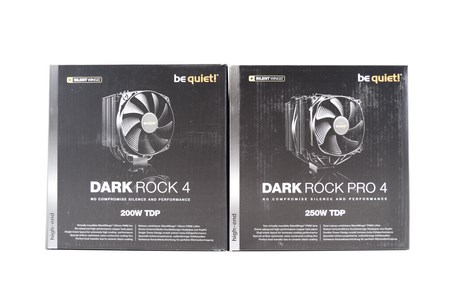
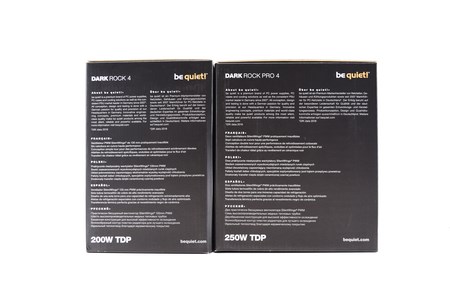






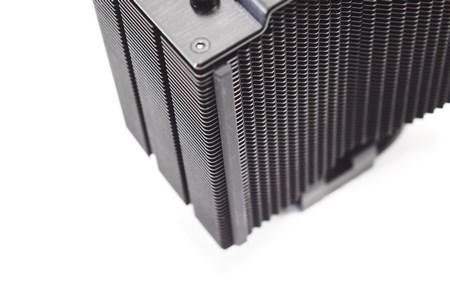





.png)

